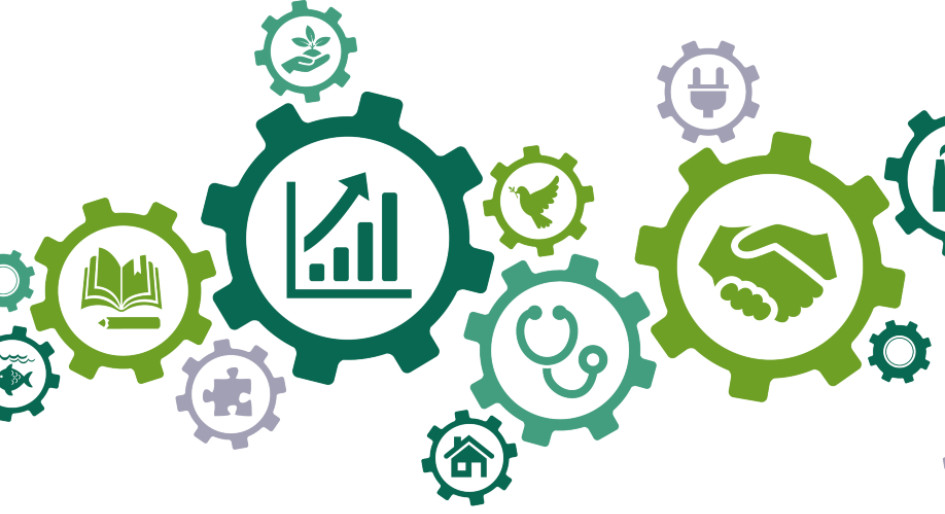Clean energy projects present a burgeoning means for Indigenous peoples to assert stewardship of natural resources, nurture sustainable economic growth and curb reliance on fossil fuels in remote, off-grid communities. As chair of the First Nations Major Projects Coalition, Chief Sharleen Gale of Fort Nelson First Nations has insight on where that’s happening and what’s needed to propel more such initiatives.
“Our Nations want to get involved in solar, wind, geothermal, critical minerals and it’s an exciting time for us,” she told attendees at an International Energy Agency (IEA) symposium in Paris earlier this month.
The coalition is a network of about 150 Nations across Canada seeking to participate in and, where appropriate, hold an equity stake in major projects occurring within their territories. Thus far, various members are involved in 12 major projects with an estimated combined capital value of $45 billion. That includes the Tu Deh-Kah geothermal electricity facility — a first for British Columbia — now under construction in Fort Nelson, which is a wholly owned venture of the Nation’s economic development arm, Deh Tai Corporation.
“This new technology in our territory will replace dirty fuels that we’re using to produce energy in the region because we are not connected to the grid,” Gale reported. “Traditionally, we were always getting the low-paying jobs, the seasonal work, so when it was time to wrap up a project, people would be laid off. Now, with the 100 per cent Indigenous-owned geothermal facility, we’re seeing our people who have gone away to university come back home, and they are leading this transition. That makes us very proud that we are providing that opportunity to our members and to future generations.”
IEA looks to “people-centred” outcomes of the net-zero transition
The Canadian government organized the panel discussion exploring the potential synergies of net-zero emissions goals with economic development, job growth and diversity, equity and inclusion (DEI) as part of the IEA’s annual Ministerial meeting. This year’s gathering of key political representatives from its 31 member countries also marked the multinational cooperative organization’s 50th anniversary, while Canada’s chosen theme served as something of a precursor to the IEA’s upcoming inaugural global summit on “people-centred clean energy transitions”.
In his opening remarks, Canada’s Minister of Energy and Natural Resources, Jonathan Wilkinson, maintained that the majority of people in most countries recognize that climate change is occurring and want governments and businesses to take action to address it. However, he acknowledged that many also have concerns about the economic consequences of those actions, whether that’s fallout from the demise of current energy sector incumbents or the costs of developing, building and retraining for cleaner replacements.
“We simply must offer a thoughtful and compelling economic vision of a low-carbon future if we are to bring the vast majority of citizens with us on this journey,” he submitted. “It requires an environment that is an attractive one for business investment. It requires collaboration amongst governments, industry and labour and, in Canada’s case, with Indigenous peoples.”
Looking at how government policy and spending has been enlisted in that effort, the United States Secretary of Energy, Jennifer Granholm, pointed to the “intentionality” of tax credits and grants enabled through the U.S. Inflation Reduction Act and the Bipartisan Infrastructure Law. That’s tied to the administration’s Justice40 Initiative, which has a goal for 40 per cent of the benefits from government investments in areas such as clean energy, climate action, sustainability, training and workforce development to flow to disadvantaged communities and populations.
Investors are eligible for additional tax credit increments, up to 70 per cent, based on the type and location of projects they undertake, while grants are contingent on recipients delivering “community benefits” along with their project focus. In the latter case, 20 per cent of an applicant’s proposal evaluation will be based on the associated community benefits plan.
“The tax credits pull investment into communities that have historically been left behind. The grant side is also opening up investment in communities that have been historically left behind,” Granholm said. “This whole expansion of the clean energy sector and all the jobs that entails gives us an opportunity to correct the inequities of the past. We often talk about structural inequity, but we’re trying to add structural equity into all of these provisions.”
Loan guarantee programs support access to capital
In Canada, enabling legislation for a package of clean energy tax credits (many initially announced in the 2022 fall economic statement) is now progressing through the approval stages in Parliament. As well, the Canadian government’s 2023 fall economic statement, released in November, promised a new loan guarantee program for Indigenous project proponents with details to be unveiled in the 2024 federal budget this spring.
“That will enable access to low-cost debt for Indigenous communities to essentially invest as equity participants in a range of projects associated with the low-carbon transition,” Wilkinson told the IEA gathering.
Ahead of the federal government, British Columbia’s newly released 2024 provincial budget announces funding for “provincial equity loan guarantees and other supports through a new First Nations Equity Financing Framework.” This joins the Indigenous loan guarantee programs in Ontario, Alberta and Saskatchewan, established to backstop projects ranging from $5 million to $50 million in Ontario and Saskatchewan and $20 million to $250 million in Alberta. In a statement issued just after the B.C. budget release, Gale commends the move, citing $1.5 billion in economic benefits that the Alberta and Ontario programs have helped to facilitate to date.
“And note — with no history of default. The establishment of the B.C. Framework, sends a strong signal to the private sector and capital markets that First Nations equity partnerships in B.C. can be financed,” she said. “I hope to see the government of Canada follow through on its commitment with a robust federal program in Budget 2024.”
Turning back to the IEA panel discussion, Granholm advised that the U.S. has made USD $20 billion “in loan guarantees for tribal nations” available through its similar program. Gale highlighted the equity partnership model with Ontario’s provincial transmission and distribution services provider, Hydro One, which opens the way for First Nations to secure a 50 per cent stake in new large-scale transmission line projects within their territories. She also underscored the importance of strategic start-up support, such as the federal grant that helped with the Tu Deh-Kah geothermal facility.
“We need to provide those opportunities for First Nations so we can take that first step. If we don’t have those opportunities, then we’re not going to be able to get involved in the commercial aspect of these projects,” Gale said.
“We need to ensure in Canada that Indigenous peoples are active participants, but that they also receive long-term benefits that will flow from participation in the projects that will be enabled through the work that we do to address climate change,” Wilkinson concurred.







